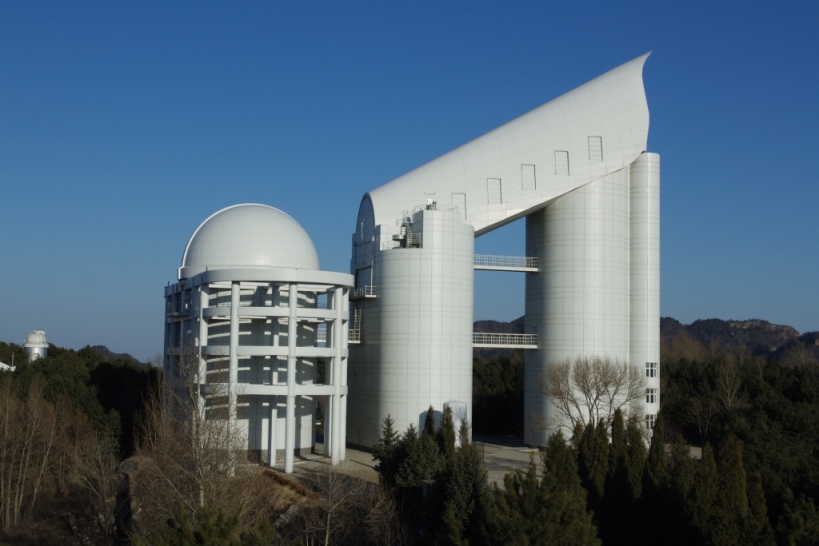The Large Sky Area Multi-Object Fiber Spectroscopic Telescope (LAMOST)
Group Leader: Yongheng Zhao Email: yzhao@nao.cas.cn
Homepage: The Large Sky Area Multi-Object Fiber Spectroscopic Telescope
The Large Sky Area Multi-Object Fiber Spectroscopic Telescope (LAMOST) is a special active reflecting Schmidt telescope. LAMOST adopts an innovative active optics technique that changes the mirror surface continuously to achieve a series of different reflecting Schmidt systems at different times. It breaks through the bottleneck that has hampered large-scale spectroscopic survey observations in the past by combining a large aperture (a clear aperture up to 4.9 meters in diameter) with a wide field of view (5 degrees). Its design incorporates a combination of thin deformable mirror active optics and segmented active optics. Its spherical primary mirror and active aspherical correcting mirror are both segmented with 37 and 24 hexagonal submirrors respectively. It is the first telescope in the world that uses two large segmented mirrors in one optical system. By using a distributed parallel controllable fiber positioning technique, the focal surface with a diameter of 1.75m can accommodate up to 4000 optical fibers. LAMOST has 16 spectrographs with 32 CCD cameras, making it the telescope with the highest spectral acquisition rate in the world.
As a national large scientific project, the LAMOST project was formally proposed in 1996, and approved by the Chinese Government in 1997. Construction was started in 2001, completed in 2008 and passed official acceptance in June 2009.
The LAMOST pilot survey started in October 2011 and the spectroscopic survey was launched in September 2012. It will make important contributions to understanding the structure and evolution of the Galaxy, the physics of galaxies, and multi-waveband cross-identification of celestial objects.


